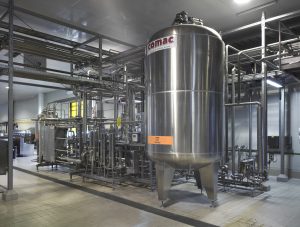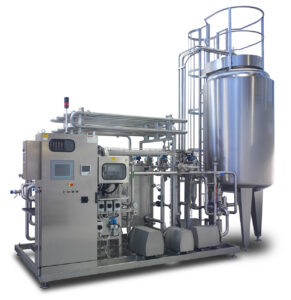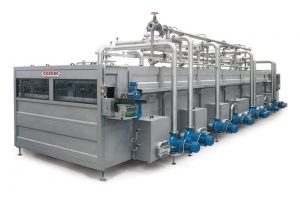Pasteurizers, these unknown plants!
The word “pasteurization” refers to the thermal process (a combination of time and temperature) used to inactivate potentially pathogen microorganisms, thus increasing product shelf life in complete safety.

In principle, craft beers do not require pasteurization as they are usually distributed on a limited market, which is normally not far from their production site, and therefore consumed within a short period of time. On the contrary, beers produced on an industrial scale are usually pasteurized, although this process tends to be as limited as possible, in order not to affect too much the organoleptic and nutritional characteristics of the product.

Flash pasteurization pasteurizes products before packaging them in glass or pet bottles, cans or kegs. The product is kept at a temperature of around 71/72°C during a very short time (20 seconds approximately). Both parameters (temperature and time) can be adjusted to reach the pasteurization units required.
A 3 section plate heat exchanger heats and then cools down the product: a first substantial heating takes place when the beer proceeding from the cellar “meets” the pasteurized product in the regeneration section of the heat exchanger. After the first heating, the beer temperature is raised until it reaches the pasteurization temperature in the heating section, and kept at this temperature in the tubular holding section long enough so as to reach the required PUs. After the holding section, the first substantial cooling takes place as the beer “meets” the cold unpasteurized beer in the regeneration section. Finally, the product is cooled down in the cooling section of the heat exchanger.
This cycle grants a thermal regeneration up to the 95%.
After cooling, the pasteurized beer is sent to a pressurized storage tank usually called buffer tank, and from there to the filling unit.

Tunnel pasteurization, on the contrary, is used to pasteurize beer already packed in glass or pet bottles and cans; therefore, the thermal action applies to the container, cap or lid as well, and to the gas contained in the headspace.
The pasteurization temperature (62°C approximately) is maintained stable during about 8 minutes.
The container temperature is gradually raised by means of water showers at growing temperatures, then kept stable during the time set in the machine control panel and finally lowered by means of water showers at decreasing temperatures. The crossed baths allow saving energy, as the water heated by the containers during the cooling phase is then used to heat the cold containers, and viceversa.
COMAC manufactures Flash pasteurizers with capacities up to 50,000 lph and single or double deck tunnel pasteurizers whose dimensions vary according to the hourly output requested and diameter of the containers.
Several machines of both types are installed all over the world.